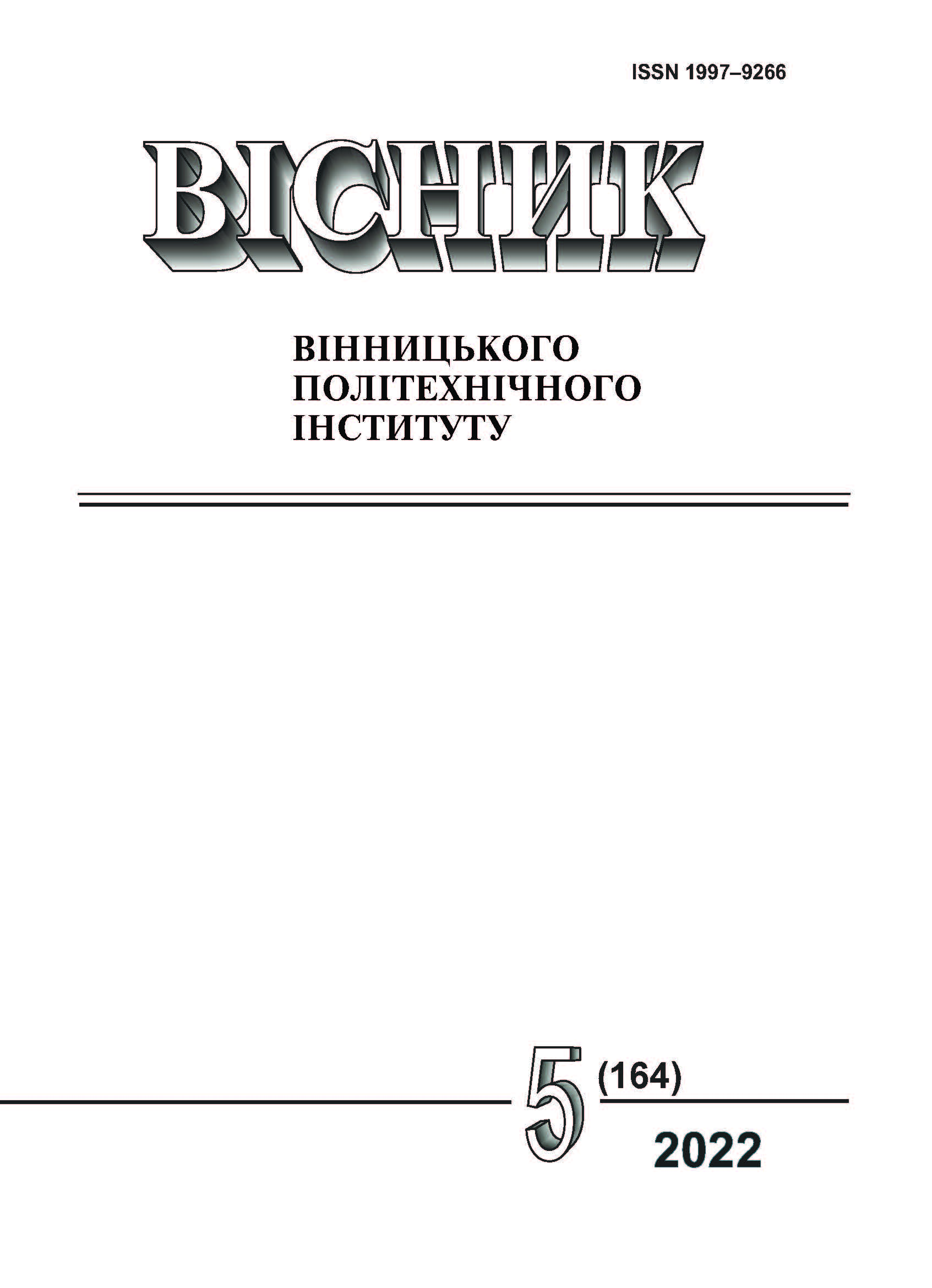ОЦІНКА ВПЛИВУ ПОКАЗНИКІВ САНІТАРНО-ГІГІЄНІЧНОГО І РАДІАЦІЙНОГО СТАНІВ НА ЕКОЛОГІЧНУ БЕЗПЕКУ РІВНЕНСЬКОЇ ОБЛАСТІ
DOI:
https://doi.org/10.31649/1997-9266-2022-164-5-38-44Ключові слова:
мікроелементи, важкі метали, цезій-137, радон, екологічна безпека, безпека, ризик, загроза, небезпека, заходиАнотація
Наведено результати досліджень впливу показників санітарно-гігієнічного стану ґрунтів Рівненської області на ступінь її екологічної безпеки. Наведено результати досліджень впливу показників санітарно-гігієнічного стану ґрунтів Рівненської області на ступінь її екологічної безпеки. Розглянуто вміст в ґрунтах мікроелементів та важких металів (марганцю, цинку, міді, свинцю, кадмію), проаналізовано радіаційний стан ґрунтів за вмістом цезію-137 та густину потоку радону з поверхні ґрунтів.
Оцінювання станів екологічної безпеки районів за показниками стимуляторами вмісту у ґрунтах мікроелементів бору і марганцю рекомендовано здійснювати за залежностями, які мають вигляд зростаючих парабол другого порядку, а для показників дестимуляторів вмісту цинку, міді, свинцю, кадмію, цезію-137, густини потоку радону — за залежностями, які мають вигляд спадних парабол другого порядку.
Встановлено, що екологічна безпека за вмістом бору оцінюється категоріями: 15 районів «безпека», 1 район «ризик»; за вмістом марганцю категоріями: 15 районів «безпека», 1 район «ризик»; за вмістом цинку оцінюється категоріями 16 районів «безпека»; за вмістом свинцю 15 районів «безпека», 1 район «загроза»; за вмістом міді категоріями: 12 районів «безпека», 1 район «ризик», 3 райони «загроза»; за вмістом кадмію категорією 16 районів «безпека».
За агрегованим показником екологічної безпеки санітарно-гігієнічний стан ґрунтів області оцінюється кількісними і якісними показниками, а саме у зоні Полісся від 0,85 до 0,91, що відповідає для 7 районів категорії «безпека», а у зоні Лісостепу від 0,72 до 0,91, що для 9 районів відповідає також категорії «безпека».
За вмістом цезію-137 екологічна безпека ґрунтів зони Полісся оцінюється категоріями: 2 райони «безпека», 1 район «ризик», 2 райони «загроза», 2 райони «небезпека», тоді як у зоні Лісостепу 9 районів «безпека», а за величиною густини потоку радону з поверхні ґрунтів зони Полісся екологічна безпека оцінюється категоріями 6 районів «безпека», 1 район «загроза», а у зоні Лісостепу категоріями: 1 район «ризик», 5 районів «загрози», 1 район «небезпека».
Агрегований показник екологічної безпеки радіаційного стану ґрунтів області оцінюється кількісно і якісно, а саме: у зоні Полісся від 0,27 до 0,81, що для 3 районів відповідає категорії «безпека», 2 районів «ризик», 2 райони «загроза», а у зоні Лісостепу від 0,62 до 0,80, що для 3 районів відповідає категорії «безпека», 6 районів «ризик».
Для послаблення дії дестимуляторів, а саме значного вмісту в ґрунтах зони Полісся цезію-137 та можливого його накопичення у сільськогосподарській продукції рекомендовано підтримувати в орних землях позитивний баланс гумусу за рахунок внесення диференційованих норм від 1 до 16 т/га органічних добрив та вапнування ґрунтів; за підвищеного виділення з поверхні ґрунтів радону та надходження його до будинків рекомендується їх провітрювати та облаштовувати під час будівництва екранування підвальних приміщень.
Посилання
О. В. Варжель, «Методика оцінки впливу показників якості довкілля на поширеність хвороб населення районів Рівненської області,». Вісник Вінницького Політехнічного університету, № 4 (163), с. 19-26, 2022. https://doi.org/10.31649/1997-9266-2022-163-19-26 .
З. В. Герасимчук, і А. О. Олексюк, Екологічна безпека регіону: діагностика та механізм забезпечення. Луцьк, Україна: Надстир’я, 2007, 280 с.
В. О. Шумлянський, О. М. Івантишина, і В. М. Артеменко, Малі токсичні елементи в рудах і навколишньому середовищі ртутних, поліметалічних і золоторудних родовищ Донбасу і Закарпаття. Київ, Україна: Знання України, 2002, 143 с.
І. І. Залеський, і М. О. Клименко, Екологія людини. Київ, Україна: Видавничий центр «Академія», 2005, 288 с.
М. М. Городній, А. В. Бикін, і Л. М. Нагаєвська, Агрохімія. Київ, Україна: ТОВ «Алефа», 2003, 786 с.
Химическая энциклопедия, т. 1. Москва: Сов. энцикл., 1988.
В. П. Кучерявий, Екологія. Львів, Україна: Світ, 2000, 500 с.
Л. Г Бондарев. Микроэлементы — благо и зло. Москва: Знание, 1984, 370 с.
М. О. Клименко, О. М. Клименко, і О. О. Лебедь, «Характеристика території Рівненської області за величиною густини потоку радону з ґрунту,». Ядерна фізика та енергетика, № 23, с. 122-130, 2022. https://doi.org/10.15407/jnpae2022.02.122 .
##submission.downloads##
-
PDF
Завантажень: 94
Опубліковано
Як цитувати
Номер
Розділ
Ліцензія

Ця робота ліцензується відповідно до Creative Commons Attribution 4.0 International License.
Автори, які публікуються у цьому журналі, згодні з такими умовами:
- Автори зберігають авторське право і надають журналу право першої публікації.
- Автори можуть укладати окремі, додаткові договірні угоди з неексклюзивного поширення опублікованої журналом версії статті (наприклад, розмістити її в інститутському репозиторії або опублікувати її в книзі), з визнанням її первісної публікації в цьому журналі.
- Авторам дозволяється і рекомендується розміщувати їхню роботу в Інтернеті (наприклад, в інституційних сховищах або на їхньому сайті) до і під час процесу подачі, оскільки це сприяє продуктивним обмінам, а також швидшому і ширшому цитуванню опублікованих робіт (див. вплив відкритого доступу).





